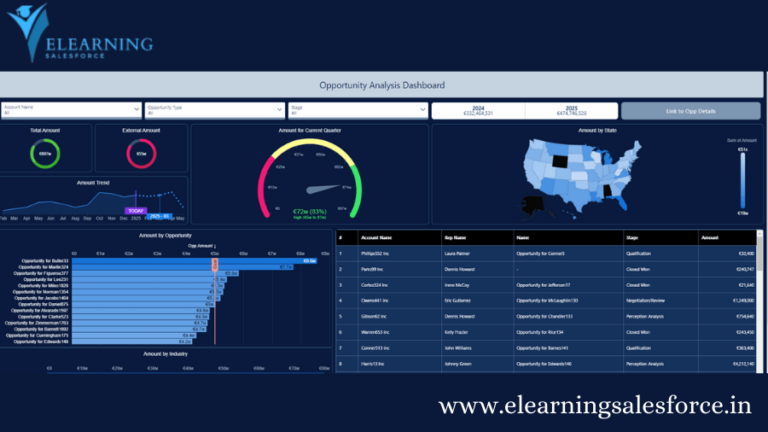In today’s customer-centric business landscape, Customer Relationship Management (CRM) has emerged as a crucial tool for organizations to effectively manage and nurture their customer interactions. In this blog, we will dive into the world of CRM, exploring its definition, key components, benefits, and implementation considerations.
Defining CRM ( Customer Relationship Management)
CRM, short for Customer Relationship Management, refers to the strategies, processes, and technologies that enable organizations to build and maintain strong relationships with their customers. It encompasses various activities, including customer acquisition, retention, and engagement, as well as the management of customer data and interactions.
Key Components of CRM ( Customer Relationship Management)
Customer Data Management: CRM systems serve as centralized repositories for customer information, including contact details, purchase history, preferences, and interactions. This data provides organizations with valuable insights to understand their customers’ needs, preferences, and behaviors.
Sales Force Automation: CRM systems often include features that streamline and automate sales processes. These features typically include lead and opportunity management, contact management, sales forecasting, and reporting, empowering sales teams to efficiently manage their pipeline and close deals.
Marketing Automation: CRM platforms integrate marketing automation capabilities to streamline marketing activities and campaigns. This may include email marketing, lead nurturing, campaign management, analytics, and personalized customer communications, enabling organizations to deliver targeted and effective marketing messages.
Customer Service and Support: CRM systems provide tools for managing customer service interactions and support tickets. These features help organizations track and resolve customer issues, manage service level agreements, and provide timely and personalized support.
Benefits of CRM ( Customer Relationship Management)
Improved Customer Relationships: CRM systems allow organizations to better understand their customers by consolidating and analyzing customer data. This knowledge helps businesses deliver personalized experiences, build stronger relationships, and meet customer expectations more effectively.
Enhanced Sales Performance: CRM platforms empower sales teams with a wealth of information, automation tools, and analytics. By providing insights into customer behavior and preferences, CRM systems help sales professionals prioritize leads, track sales activities, and improve overall sales performance.
Streamlined Marketing Efforts: CRM systems enable targeted marketing campaigns based on customer segmentation, preferences, and behavior. Marketing automation features streamline marketing workflows, track campaign performance, and facilitate personalized communication, resulting in more effective marketing efforts.
Improved Customer Service: With a CRM system, organizations can provide better customer service and support. Customer service representatives have access to customer information, enabling personalized and efficient interactions. This leads to increased customer satisfaction and loyalty.
Implementation Considerations in CRM
Define Objectives and Requirements: Before implementing a CRM system, it is crucial to identify organizational goals and specific requirements. Understanding what you aim to achieve and what features you need will guide the selection and implementation process.
Choose the Right CRM Solution: There are various CRM solutions available, ranging from basic to enterprise-level systems. Consider factors such as scalability, customization options, integration capabilities, and ease of use to select a CRM solution that aligns with your organization’s needs.
Data Migration and Integration: When implementing a CRM system, data migration from existing systems and integration with other applications (e.g., ERP, marketing automation) may be necessary. Careful planning and execution are required to ensure a smooth transition and seamless data flow.
User Adoption and Training: Successful CRM implementation requires user adoption and training. Providing comprehensive training and support to employees is essential to maximize the benefits of CRM and ensure its effective use across the organization.
What are the 4 stages to CRM customer relationship management?
Customer Relationship Management (CRM) typically involves four main stages or phases that organizations follow to effectively manage their interactions with customers. These stages are often referred to as the “CRM Process” or the “Customer Relationship Management Lifecycle.” Here are the four stages:
- Customer Acquisition: This stage focuses on identifying potential customers, attracting them to your products or services, and converting them into actual customers. Key activities in this stage include marketing campaigns, lead generation, lead qualification, and sales prospecting. The goal is to build a pipeline of potential customers who are interested in what your business offers.
- Customer Onboarding: Once a prospect becomes a customer, the onboarding stage comes into play. This stage involves welcoming the customer, providing necessary information about your products or services, and helping them get started with their purchase. Proper onboarding can lead to better customer satisfaction and retention. Activities in this stage include customer orientation, training, setting up accounts, and ensuring a smooth transition from prospect to customer.
- Customer Relationship Management and Engagement: This is the core of CRM, where you actively manage and nurture relationships with your existing customers. The focus here is on delivering exceptional customer experiences to build loyalty, increase customer satisfaction, and encourage repeat business. This stage involves ongoing communication, personalized interactions, addressing customer inquiries or issues promptly, and offering relevant upsell or cross-sell opportunities.
- Customer Retention and Loyalty: The final stage involves retaining your customers and turning them into loyal advocates for your brand. Loyal customers are more likely to refer others, provide positive reviews, and continue doing business with you. To achieve this, organizations implement loyalty programs, gather customer feedback, and continue to enhance the customer experience. The aim is to create a long-lasting and mutually beneficial relationship with customers.
It’s important to note that these stages are not strictly linear; they often overlap and interact with each other. Additionally, CRM is an ongoing process, and organizations continuously cycle through these stages to maintain and improve their customer relationships.
Implementing an effective CRM strategy involves using technology, data analysis, and a customer-centric approach to guide decision-making and optimize interactions at each stage of the customer relationship management lifecycle.
Conclusion
CRM has become a vital tool for organizations to manage and nurture their customer relationships effectively. By leveraging customer data, automation, and analytics, CRM systems enable businesses to deliver personalized experiences, streamline sales and marketing efforts, and enhance customer service. Implementation of a CRM system requires careful planning, selecting the right solution, and ensuring adequate user adoption and training. However, the benefits of CRM, including improved customer relationships, enhanced sales performance, and streamlined marketing efforts, make it a worthwhile investment for organizations seeking to thrive in a competitive marketplace.




